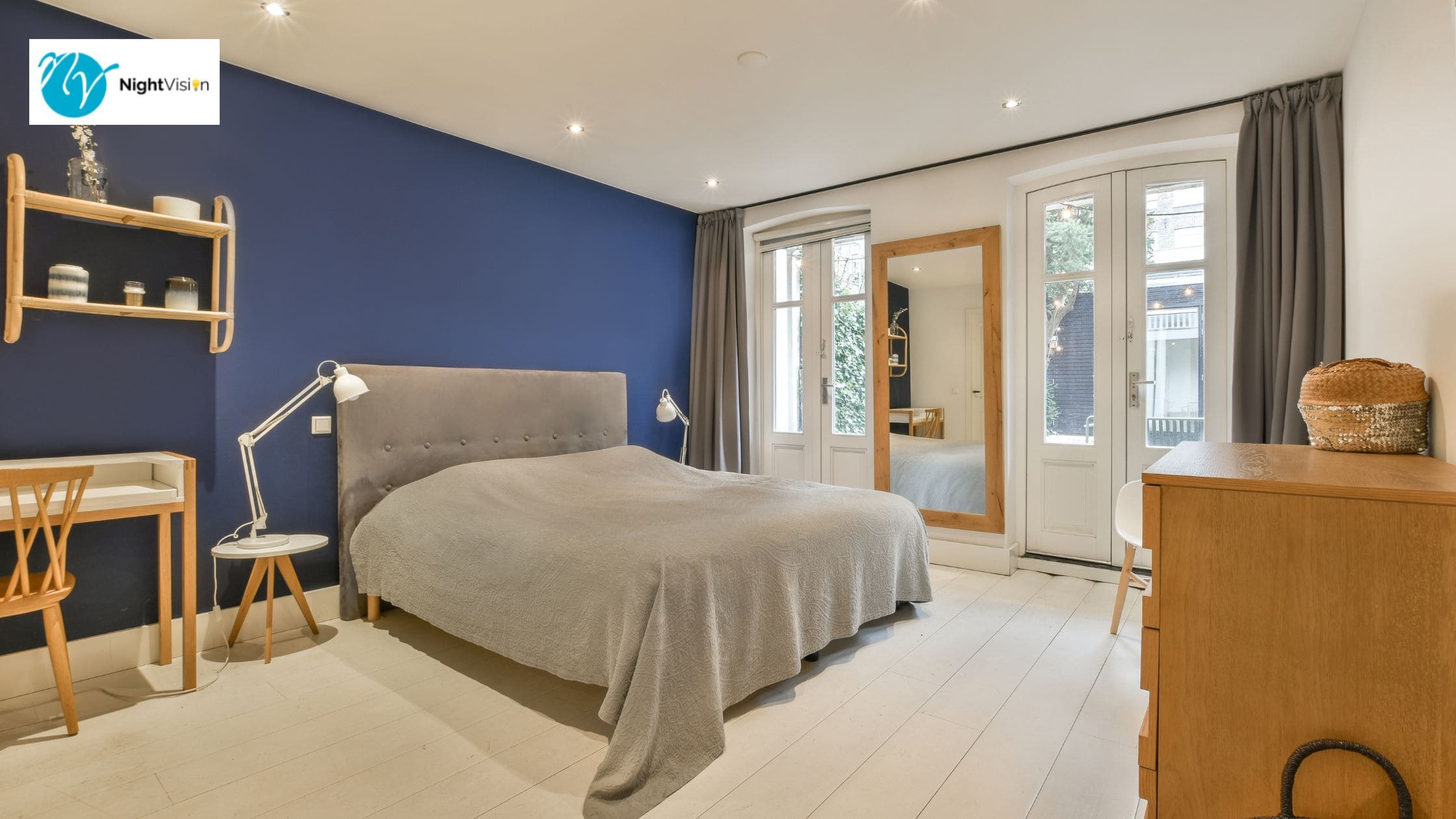Lighting plays a crucial role in setting the mood and function of any living room.
Whether you’re designing a cozy nook in a small apartment or creating a grand atmosphere in a large, open-plan living room, the right lighting can make a significant difference in the ambiance and usability of the space.
Understanding how to plan living room lights effectively for different room sizes is key to achieving both practical and aesthetic results.
In this article, we’ll explore how to approach lighting for small versus large living rooms, offering tips on choosing the right living room light services, layering light, and creating the perfect balance for your space.
Understanding the Basics of Living Room Lighting
Before diving into specific strategies for small and large living rooms, it’s important to understand the basic types of lighting that can be used in any living room:
- Ambient Lighting – This is the primary source of light in a room, providing overall illumination without being too harsh. Ceiling lights, recessed lighting, or pendant lights are common options for ambient lighting.
- Task Lighting – This type of lighting is focused and is intended to provide extra light where it’s needed for activities like reading, writing, or knitting. Table lamps, floor lamps, and under-cabinet lighting are popular choices.
- Accent Lighting – Accent lighting are used to highlight features in the room such as artwork, architectural details, or indoor plants. These lights create visual interest and can be installed as spotlights or track lighting.
- Decorative Lighting – This is designed to add style to your space while also providing light. Chandeliers, pendant lights, or lighted sconces can serve both functional and decorative purposes.
Understanding these layers of lighting will help you design an effective lighting strategy for any size living room.
Lighting for Small Living Rooms
When working with a small living room, it’s important to maximize light while keeping the space feeling open and airy.
Small rooms can easily feel cramped if not properly lit, so achieving a balance between sufficient light and minimal visual clutter is crucial.
Maximize Natural Light
If you are fortunate enough to have windows in your small living room, take full advantage of natural light during the day.
Keep window coverings light and airy, such as sheer curtains, to let in as much light as possible without sacrificing privacy.
Use Multi-Functional Lighting Fixtures
In a small living room, you might not have the space for large floor lamps or several table lamps.
Instead, opt for multi-functional living room lights that combine different lighting styles in one.
For example, ceiling-mounted fixtures with adjustable arms can serve as both ambient and task lighting.
Recessed lights are also a great option for saving space while providing effective lighting.
Go Vertical with Lighting
Using floor lamps that direct light upwards or installing wall sconces can help save precious floor space while still adding plenty of light.
Vertical lighting draws the eyes upward, giving the room an illusion of height, which is ideal for small spaces.
Layer Your Lighting Wisely
A key to good lighting in small rooms is layering.
Start with ambient lighting, such as recessed lighting or a ceiling-mounted fixture, and then add task lighting through a small table lamp or a wall-mounted reading light.
Accent lighting is especially useful in smaller rooms to create focal points without overcrowding the space.
Think about highlighting artwork or an interesting feature wall to add depth to the room.
Stick to Light Colors for Fixtures
Dark or bulky lighting fixtures can make small rooms feel even more cramped.
Instead, opt for lighter-colored fixtures or minimalist designs that won’t visually overpower the space.
Consider using pendant lights with transparent or light-colored shades to allow light to flow freely and illuminate the entire room without feeling heavy.
Lighting for Large Living Rooms
A large living room offers more flexibility and options when it comes to lighting.
However, it can also present challenges because the space may feel too dim without sufficient lighting or too bright if too many fixtures are used.
The key to designing effective lighting for a large living room is balancing the need for ambient light with task and accent lighting.
Create Zones Within the Room
Large living rooms often have multiple functions: a sitting area, a reading nook, a media space, and maybe even a dining area.
For each of these zones, you will need appropriate task lighting.
For example, use a pendant light or chandelier in the sitting area for general illumination, while placing floor lamps or table lamps in the reading nook to provide focused light.
This zoned approach to lighting helps to ensure that each area is well-lit without overwhelming the space.
Choose Large-Scale Fixtures
In a large living room, it’s important to use appropriately sized fixtures.
Large chandeliers, oversized pendant lights, or a series of coordinated pendant lights over a seating area can help create visual harmony and ensure the space is well-lit.
The larger the space, the larger the fixtures you can use.
Use Recessed Lighting for Uniform Coverage
For large spaces, recessed lighting can be a great choice to ensure even illumination throughout the room.
A series of recessed lights in the ceiling will provide ambient lighting without taking up valuable space on the floor or walls.
To avoid dark corners, make sure the spacing of the recessed lights is even and sufficient to cover the entire room.
Add Layers of Accent Lighting
Large living rooms can benefit from multiple layers of lighting to create depth and dimension.
Use accent lighting strategically to highlight architectural details such as columns, large windows, or artwork.
Floor lamps and table lamps can also be used as accent lighting to create contrast and prevent the room from feeling flat or too uniform.
Consider Dimming Options
For large living rooms, it’s a good idea to install dimmer switches on your living room lights.
With a dimmer, you can adjust the lighting intensity based on the time of day and the activities you’re engaging in.
For example, you may want brighter lighting for cleaning or playing games, but softer, more ambient light in the evening when you’re relaxing or watching TV.
Conclusion
When planning living room lights for small and large spaces, the key is to tailor your lighting strategy to the specific needs of the room while also considering the overall design aesthetic.
In smaller spaces, focus on maximizing natural light, using multi-functional fixtures, and layering your lighting carefully.
In larger spaces, prioritize creating zones, using larger fixtures, and incorporating dimming options for flexibility.
With the right combination of ambient, task, accent, and decorative lighting, you can transform any living room into a welcoming and well-lit area.
If you’re looking for expert help with your lighting design, NightVision Outdoor Lighting is the top choice in Metro Atlanta and North Georgia.
In business since 1998, NightVision has installed exterior lighting in over 5,000 homes, setting the standard for lighting excellence.
Whether you want a soft, elegant look or something more striking, our team can help bring your lighting vision to life.
Contact us today for a consultation and discover the ultimate outdoor lighting experience.
FAQs
What type of lighting is best for small living rooms?
For small living rooms, it’s essential to maximize light while avoiding clutter. Use multi-functional fixtures like ceiling-mounted lights with adjustable arms or recessed lighting to save space. Incorporate a mix of ambient, task, and accent lighting to create a balanced and open atmosphere.
How can I make my small living room appear brighter?
To make your small living room appear brighter, opt for light-colored walls, furniture, and light fixtures. Maximize natural light by using sheer curtains, and use soft, warm lighting from lamps or recessed fixtures to create a welcoming glow. Consider using mirrors to reflect light and create the illusion of a larger space.
Can I use floor lamps in a small living room?
Yes, floor lamps can be a great option for small living rooms, especially if you choose models that are sleek and vertical to save floor space. Look for lamps that direct light upward, which will help create the illusion of height and make the room feel more open.
How do I plan lighting for a large living room?
For large living rooms, create distinct lighting zones for different activities. Use large-scale fixtures like chandeliers or pendant lights to illuminate the entire space and incorporate task lighting, such as table lamps and floor lamps, in specific areas like reading corners or seating arrangements. Accent lighting can highlight artwork or architectural features.
What type of lighting should I use for a reading nook in a large living room?
In a large living room, a dedicated reading nook should have focused task lighting. Choose a comfortable table lamp or a tall floor lamp that provides direct light for reading. Adjustable task lighting allows you to control the intensity and direction of light based on your needs.
How can I highlight artwork or features in a large living room?
Accent lighting, such as track lighting or spotlights, is perfect for highlighting artwork or architectural features in a large living room. You can also use wall-mounted sconces to add interest and dimension while drawing attention to specific areas.




